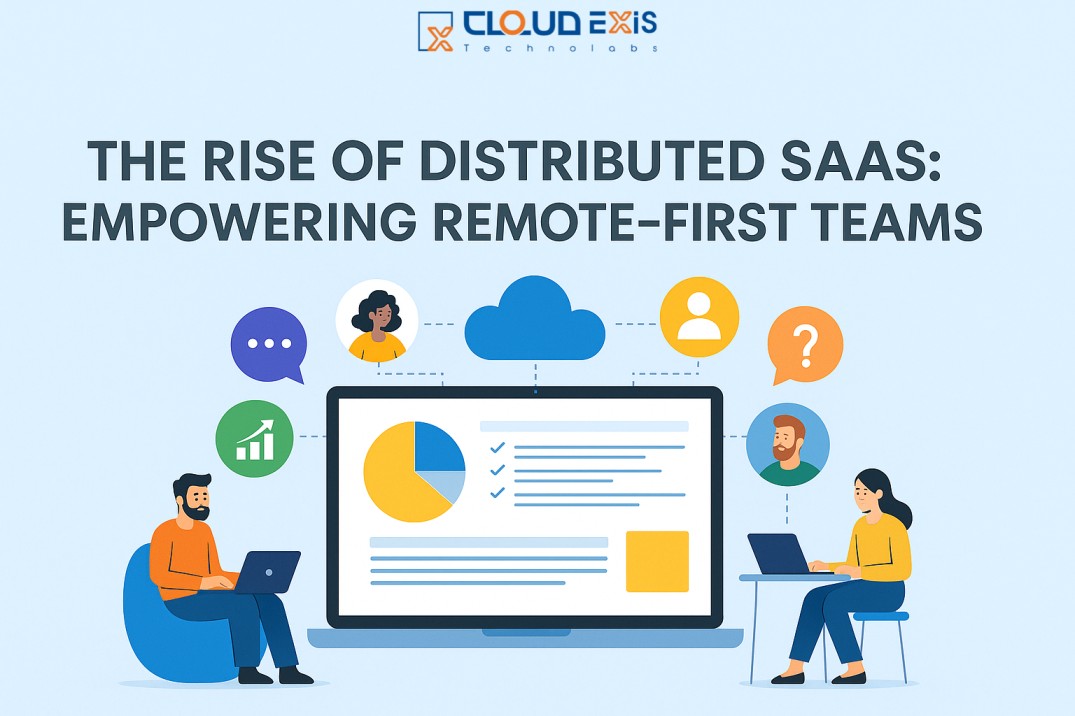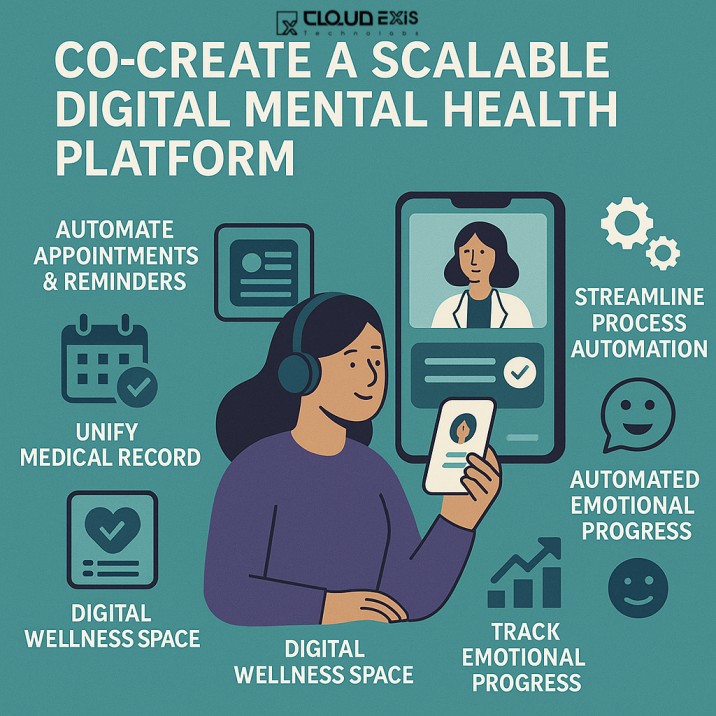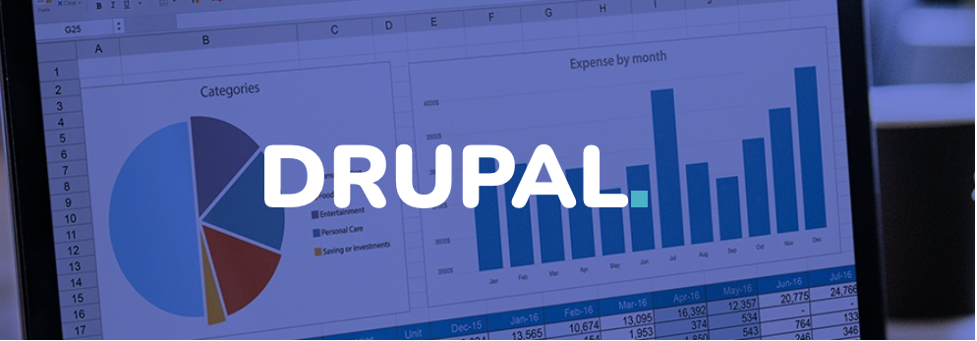As remote work transitions from a temporary necessity to a long-term strategy, organizations across the globe are reevaluating how they manage teams, projects, communication, and daily operations. At the heart of this shift lies SaaS (Software as a Service) — agile, cloud-based platforms that have become the operational backbone of remote-first companies.
From project management tools to HR platforms and collaboration suites, SaaS has redefined productivity for distributed teams. At Cloudexis Technolabs, we’ve seen this transformation firsthand. In this blog, we’ll explore how SaaS is empowering remote teams, key use cases across departments, essential features businesses need, and what the future holds for distributed SaaS.
Why Remote-First Teams Need SaaS More Than Ever
Traditional on-premise software just doesn’t cut it anymore. Remote-first organizations require:
Access from anywhere, anytime
Real-time updates and communication
Seamless onboarding of globally distributed employees
Scalable tools that adapt to changing team sizes
Centralized data with robust cloud security
SaaS platforms tick all these boxes, enabling businesses to scale, collaborate, and execute without boundaries.
Key Benefits of SaaS for Remote Teams
1. Centralized Collaboration Across Time Zones
Whether your design team is in India, your developers are in Eastern Europe, and your product managers are in the U.S., SaaS ensures they’re always aligned.
Tools like Slack, Microsoft Teams, Notion, and Trello provide asynchronous and synchronous ways to work together, no matter the time zone. Everything lives in the cloud — from tasks to documents to real-time conversations.
2. Faster Onboarding & Offboarding
HR teams can leverage SaaS platforms like BambooHR, Gusto, or Zoho People to onboard remote employees in minutes — complete with e-signatures, training modules, and compliance checklists.
This not only saves time but standardizes employee experience across geographies.
3. Cost-Efficiency and Scalability
SaaS platforms operate on subscription models. That means no expensive hardware, no setup costs, and no bulky licensing fees. You only pay for what you need — and scale up or down with ease.
For startups and fast-growing remote teams, this flexibility is invaluable.
4. Secure Access & Data Compliance
Leading SaaS providers ensure enterprise-grade security, encryption, and compliance with regulations like GDPR, HIPAA, and SOC 2 — vital for teams working in sensitive industries like healthcare, finance, or education.
Tools like Okta and OneLogin allow secure single sign-on (SSO) experiences, making security seamless.
SaaS Use Cases for Remote-First Teams
1. Project Management
Project management is the lifeline of remote teams. Platforms like Asana, Jira, Monday.com, and ClickUp have revolutionized how distributed teams manage tasks, sprints, and goals.
With features like:
Task dependencies
Time tracking
Team dashboards
Kanban boards
Reporting and analytics
…teams can remain aligned, accountable, and productive, without needing daily standups.
2. Communication and Collaboration
Email is no longer enough. Real-time communication tools like Slack, Zoom, and Google Meet allow dynamic and rich interactions.
Integrated tools like Notion and Confluence serve as living documentation libraries, where ideas, plans, and SOPs evolve transparently and collaboratively.
3. Customer Support
Remote customer support teams thrive with SaaS platforms like Zendesk, Freshdesk, Intercom, and Zoho Desk.
Features like:
Ticketing systems
Knowledge bases
Live chatbots
Agent routing
…help remote support teams maintain fast, efficient, and high-quality service 24/7.
4. Human Resources and Payroll
Handling HR operations remotely can be challenging. SaaS makes it seamless. With platforms like Remote.com, Deel, Rippling, or Cloudexis-built custom HRMS, companies can:
Manage global payroll
Onboard employees and contractors
Track time and attendance
Run performance reviews
Ensure global labor compliance
5. Time Tracking & Productivity
For remote teams, tracking work hours and productivity is crucial — not just for billing, but for performance and transparency.
Tools like Toggl, Clockify, Hubstaff, and Time Doctor provide:
Time entries
Screenshots (optional)
Productivity scores
Billable hour reports
Managers gain visibility without micromanaging, and employees feel empowered with clarity.
Must-Have Features in SaaS for Remote Teams
When building or adopting SaaS platforms for remote-first environments, consider these essential features:
| Feature | Why It Matters |
|---|---|
| Cloud-Based Access | Enables global accessibility and real-time updates |
| Multi-Time Zone Support | Automatically adjusts schedules, meeting times, and deadlines |
| Role-Based Access Control (RBAC) | Securely manages what team members can see and do |
| Mobile Compatibility | Empowers remote workers to stay connected via their smartphones |
| Integration with Other Tools | Connects with CRM, email, calendar, video conferencing, etc. |
| Offline Mode (Optional) | Useful for users with intermittent connectivity |
| Analytics & Reporting | Provides insights into team performance and engagement |
How Cloudexis Technolabs Supports Distributed SaaS Development
At Cloudexis Technolabs, we specialize in designing and developing SaaS platforms that enable businesses to operate with agility — especially in remote-first or hybrid settings.
Our experience spans:
Project and Task Management Tools
Remote Onboarding Systems
Custom HRMS and Payroll Solutions
Client Support Portals
AI-Integrated Chatbots for Team Communication
Collaboration and File-Sharing Tools
We use modern stacks like Laravel, Node.js, React, and Flutter, ensuring secure, scalable, and user-friendly SaaS systems — backed by robust cloud deployment strategies using AWS, Azure, and GCP.
Whether you’re a startup building a niche SaaS tool or a growing enterprise looking to digitize operations, Cloudexis can become your dedicated development partner.
Real-World Impact: SaaS Success for Remote Teams
Here’s how SaaS is changing the game:
🌍 A UK-based EdTech startup built a custom LMS with Cloudexis, enabling remote instructors and learners to connect globally.
🧑⚕️ A healthcare consultancy transitioned to a fully remote model using a Cloudexis-developed SaaS for telemedicine scheduling and document management.
📊 A US-based marketing agency used a tailored SaaS dashboard to track remote campaign contributors and client feedback in real-time.
The result? Increased productivity, lower operational costs, and faster scaling — all driven by smart SaaS adoption.
The Future of Distributed SaaS
The future of work is hybrid, borderless, and digital-first.
SaaS platforms will continue to evolve with:
AI-based productivity assistants
No-code customization options
Enhanced VR/AR collaboration tools
Blockchain-based access and security
Deeper integration with global workforce platforms
As remote work matures, businesses that invest early in SaaS will have a significant edge in attracting talent, reducing costs, and scaling faster.
Final Thoughts
The rise of distributed SaaS is more than a trend — it’s a revolution in how we work. Remote-first teams depend on agile, integrated, and intuitive platforms to function seamlessly across continents and time zones.
At Cloudexis Technolabs, we are at the forefront of this transformation, helping businesses design, build, and scale the SaaS platforms that empower remote teams.
💬 Want to build your own SaaS platform for remote teams?
Let’s talk — Contact Cloudexis Technolabs for a free consultation.






